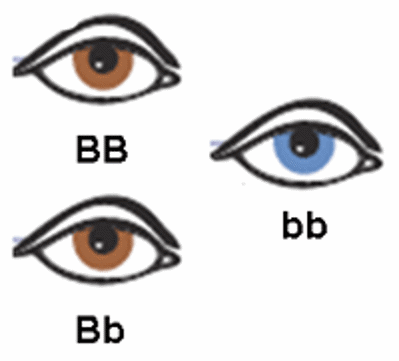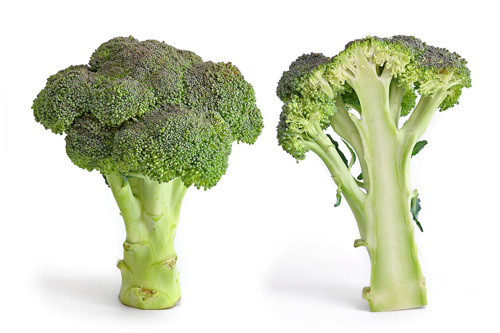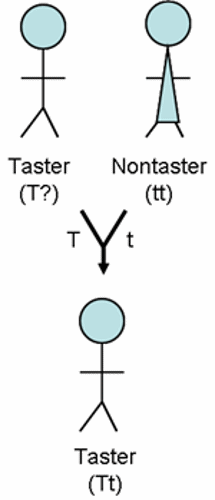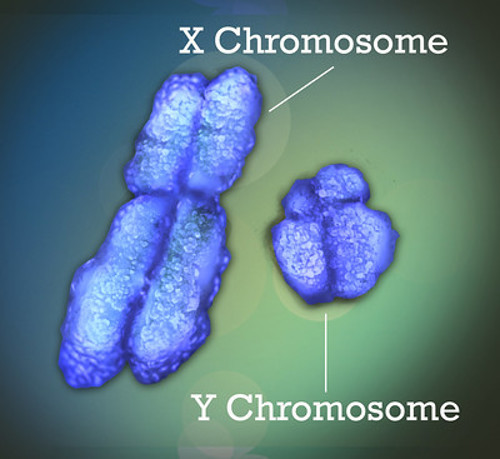
If a person has a dominant trait, can they know their genotype for certain?
September 15, 2011

- Related Topics:
- Dominant and recessive,
- Carrier,
- Genetic myths
An undergraduate student from Missouri asks:
"I find this all very confusing but if a person has a dominant trait, can they know their genotype for certain? For example, if they can roll their tongue would they know what genes they have?"
Figuring out your genes when you have a dominant trait is tricky. Usually you need a genetic test or a parent with the recessive trait to figure it out. Otherwise you can't know for sure.
There are a couple of reasons for this. First off, you have two copies of most of your genes – one from mom and one from dad. And second, a dominant version of a gene can hide the presence of a recessive one.
So if you have a dominant trait, you have two possible genotypes. You could either have two dominant versions of the gene that leads to the trait or one recessive and one dominant version. With either genotype you show the dominant trait.
Let's use eye color as a quick example. In eye color, brown is dominant over blue. Geneticists represent brown eyes with a B and blue eyes with a b.
A brown-eyed person can have either two brown versions of the OCA2 gene (BB) or a brown and a blue version (Bb). Both the BB and the Bb genotypes give brown eyes. This means that if you have brown eyes, you can't know which of these two genotypes you have.

What I want to do for the rest of the answer is expand on this to make it clearer why dominant traits have two possible genetic combinations.
However, I won't focus on tongue rolling since it is an open question whether it is even a genetic trait, let alone dominant! Turns out this one is a genetic myth, even though it’s commonly taught in school.
No, instead I'll focus on an old stand by, which is a better example: PTC tasting.
I also want to talk a little about situations where you can determine your genotype with a dominant trait. As you'll see, you can sometimes pull it off under the right circumstances.
One or Two Copies
There is a certain bitter chemical called PTC found in broccoli and brussel sprouts that only about 75% of people can taste. If you can taste it, you have the dominant trait.
Let's say you can taste it. What is your genotype?

Well, we know for sure you have one copy of the dominant tasting version of the PTC gene. Otherwise you wouldn't be able to taste the PTC! But we can't figure out your other version with just this information.
People with two dominant PTC versions don't taste PTC any differently than do people with a dominant tasting version and a recessive non-tasting version. Both people can taste it.
In genetics-speak, we know your phenotype – you can taste PTC. What we don't know is your genotype. You could either have two dominant copies or a dominant and a recessive copy of the PTC gene. And this is true for other dominant traits as well.
So now we know why you can't automatically figure out your genotype if you have a dominant trait. Of course that doesn't mean you can never find out. You can in certain situations.
Sometimes a genetic test will give you your genotype. Sometimes you just need a bit of genetic luck in your family tree to figure it out. And sometimes you can tell the two genotypes apart just by looking at someone.
Genetic Testing and Family Trees
An obvious way to figure out your genotype is to have a genetic test done. Companies like 23andMe can do this pretty inexpensively nowadays.
For this to work, though, scientists have to have figured out the genetic difference that leads to a trait. So, for example, if you have brown eyes, you can figure out your genotype with a genetic test. But not with green eyes.
This is because scientists know the major genetic differences that lead to brown eyes but not the ones for green. In other words, there is no genetic test available for green eyes.
Another way to figure out your genotype is by looking at traits in your family. If someone there has a recessive trait, then you have a chance of figuring out your genotype even if you have a dominant trait.
Let's look at PTC again. In genetics-speak, the version that lets you taste PTC is T and the one that doesn't let you taste it is t.
Let's say you can taste PTC. Like I said before, you can't know whether you have one or two copies of the taster version of the PTC gene. We don't know whether you are TT or Tt.
Imagine that your mom can't taste PTC. Now we know your genotype!

Remember, we have two copies of most of our genes – one from mom and one from dad. So you got a PTC gene from your mom and one from your dad.
We know your mom's genotype because she has a recessive trait. She can't taste PTC and so must have two copies of the non-taster version of the PTC gene. She is tt.
We also know that one of your two PTC versions came from her. So you must have a non-taster version to go with your taster one. We figured out that your genotype is Tt without an expensive test!
Another way of figuring out your genotype is if you have a child who can't taste PTC. Assuming the child is yours, you and your partner must have each passed a non-taster version of the PTC gene to your child. So you must have had one to pass!
Other Ways to Figure Out Genotype
In some cases you can make a pretty good guess at your genotype even without a genetic test or the right family history. But it will only work for some traits.
For example, some people who carry the recessive version of the MC1R gene that leads to red hair have freckles or red highlights in their hair and/or beard. They have traits that point to them being a carrier.

Another way to figure out genotype is if a trait depends on a single copy gene. Most of these are specific to men and are found on the X chromosome.
Remember, men have an X and a Y chromosome while women have two X's. What this means is that men have a single copy of each gene on the X and the Y.
So if a male is not colorblind, we know his genotype even though colorblindness is dominant. This is because the gene is on the X chromosome and the man has just a single copy of the gene.
He has a single copy of the dominant version of the gene that lets him distinguish red from green. So we know his genotype. And there are other X- and Y-linked traits like this too.
Bottom line is you can't always figure out genotype from phenotype with a dominant trait because dominant traits can happen with two different genotypes. But there are a few special situations where you can tell the genotypes apart.

Author: Dr. D. Barry Starr
Barry served as The Tech Geneticist from 2002-2018. He founded Ask-a-Geneticist, answered thousands of questions submitted by people from all around the world, and oversaw and edited all articles published during his tenure. AAG is part of the Stanford at The Tech program, which brings Stanford scientists to The Tech to answer questions for this site, as well as to run science activities with visitors at The Tech Interactive in downtown San Jose.
 Skip Navigation
Skip Navigation
